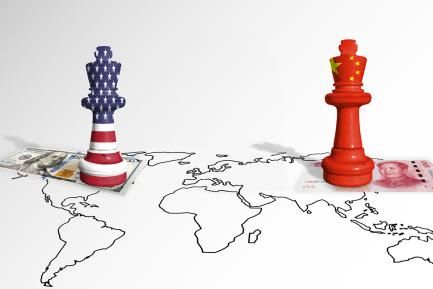The world's tourism industry has stoically resisted the onslaught of the crisis and will continue to perform well: for 2014, the World Tourism Organization (UNWTO) expects growth in both the number of international tourists and how much they will spend to speed up. This is certainly good news for a country like Spain, where tourism is the leading economic sector, employing close to 12% of the entire workforce, and the country ranks among the top tourist destinations in the world today. However, maintaining such leadership means understanding and adapting to the new outbound markets for international tourists. Particularly those from China and Russia which, in just a few years, have climbed to the top of the source markets for tourism and whose growth potential is unparalleled.
At a global level, the number of international tourists exceeded 1 billion in 20121 compared with just over half a billion in the 1990s and barely 25 million in the 1950s. Within this scenario of extraordinary growth, and as has been the case in numerous economic areas, the emerging countries have been catching up with the more established advanced economies. While the total number of tourists multiplied by 1.6 between 2000 and 2013, in Russia this figure multiplied by 2.3 (going from less than 20 million to more than 40) and the number of tourists from China multiplied by 10 (from barely 10 million to almost 100). Along the same lines, in 2012 China also became the largest source market in terms of expenditure (102 billion dollars), taking over from Germany and the US, which had topped the list for years. Russia, not even in the top 15 in terms of tourism expenditure in 2000, ranked 5th in 2012 and there is no doubt that it will rise further up the ranking in 2013 given the estimated 26% growth in expenditure. Brazil has also made notable progress in terms of outbound expenditure and, although it has entered the group of top 10 source markets (in expenditure terms), it jumped from 29th to 12th in just one year (2012), quite a record. The only one of the famous «BRIC» countries that has failed to join this trend is India, where the number of international tourists among its inhabitants is limited by very low levels of income ($1,504 GDP per capita compared with $4,180 in China, $11,310 in Brazil and $14,818 in Russia).
Naturally China leads the field in terms of magnitude. Four key factors lie behind the incredible rise both in its number of international tourists and their expenditure: (i) exceptional economic growth rates over the last 30 years, 10% annually on average, substantially increasing the per capita income of the Chinese; (ii) gradual liberalisation of government policy regarding their citizens' travel, as well as simpler procedures to obtain visas for many countries; (iii) a larger number of direct flights from China to several tourist destinations; and, of course, (iv) its more than 1.3 billion inhabitants.
In this respect, China's importance as a source market is affecting and will continue to affect the centre of gravity of tourism services, moving it closer to Asia than Europe. The fact is that Chinese tourists, who typically have more classic tastes, tend to prefer destinations that are relatively close to their country of origin. It therefore comes as no surprise that, among the cities most visited by China's international tourists in 2013, the top three were Asian: Hong Kong, Singapore and Bangkok, while the fourth place went to London, which just six years ago had topped the ranking.2 Nevertheless, and albeit acknowledging the present and future importance of the Asian giant as a source market, there is one point in the data on China's international tourism that should be noted: around 70% of its outbound tourism is to the Special Administrative Regions of Hong Kong and Macau. Although these destinations are considered to be international from a statistical point of view, Chinese citizens see them very much as national. Out of the remaining international journeys, 90% are to neighbouring countries such as Japan, Thailand, Vietnam, South Korea, Taiwan and Singapore, while Europe barely manages to attract three million Chinese travellers (3% of the total) and Spain fails to reach 200,000, a very small number in spite of the sharp increase in recent years.
On the other hand, Europe has indeed benefitted from the rise in tourism of Russian origin. While the majority of Russian tourists prefer to visit bordering countries (Finland, Kazakhstan and the currently troubled Ukraine), other destinations such as France and Spain tend to attract the country's wealthier classes. In several European tourist destinations such as Italy, the Netherlands and Greece, the rise in the number of Russian tourists during the crisis has helped to offset the slump in the number of visitors from other, more established markets.
Lastly, although the emerging countries lie behind the sharp rise in global tourism expenditure, we must not forget that the more traditional source countries (i.e. the advanced economies) also grew and still account for the largest proportion of international tourism expenditure. This point should not be ignored when designing tourism policy. In 2012, eight out of the ten top source countries in terms of tourism expenditure were advanced economies, accounting for 35% of the source market compared with 13.5% for China and Russia.
Nonetheless, it is true that China and Russia will continue to advance apace and will impact future growth in the number of international tourists at a global level. Based on a recent study by McKinsey on the trend in China's upper middle class, we can tentatively estimate that, in one decade, the close to 100 million Chinese international tourists of 2013 will have become 380 million.3 The individuals from this group, whose basic necessities will be amply covered, will be able to afford foreign holidays and will bring about the expected rise in Chinese tourism, accounting for two thirds of the increase the UNWTO expects over the next ten years in the total number of international tourists. Should these projections come about, in ten years' time 25% of all international tourists will be of Chinese origin.
Given this clear «Asianisation» of tourism, it not only seems vital to increase the frequency of direct flights, simplify the still complex visa application procedures (particularly in some European countries such as Spain) and redesign the welcome tourists receive to include certain services in line with Chinese customs, but also to get to know what our new Chinese visitors are really like. The difficulty in this lies in the fact that the Chinese tourist of tomorrow is likely to be very different from the Chinese tourist of today. At present, most foreign trips beyond Hong Kong or Macau are still carried out via package group holidays and the formula most in demand for Europe is still the «10 countries in 12 days» type, including shopping, an essential activity for this tourist segment. However, in addition to this type of holiday, which will no doubt continue to have its enthusiasts, other kinds of products will become essential to attract the attention of the up and coming new generation of tourists, Generation 2 (G2) tourists to use McKinsey's terminology. As well as being born after 1985, G2 tourists will have also grown up in an environment of relative abundance, will have had a big influence on decisions about their families' purchases (as a significant number are the only child) and will be totally connected to new technologies. This new generation of potential consumers and travellers is therefore likely to prefer visiting fewer countries in a single trip, selecting more personalised products and getting a lot of information about possible destinations through digital media and social networks.
In short, in the last few years the rise in Chinese and Russian travellers has been key to the growth in the overall number of international tourists. Far from slowing down, this phenomenon looks likely to go on growing and it will therefore be crucial to gain insight into these «new tourists» and tailor to their needs to continue to attract them. But neither must we lose sight of the rest of the outbound markets, those which appear to be well-established in Spain, as they will continue to make up the vast majority of our tourists and we must therefore cosset them so as not to lose them to an international sector that will strive to adapt to the new times and the «new tourists».
Clàudia Canals
International Unit, Research Department,
"la Caixa"
1. In 2013, according to the UNWTO's initial estimate, the total number of international tourists was 1,087 million.
2. According to Euromonitor.
3. McKinsey (2013), «Mapping China's middle class». This study estimates that, within a decade, the households belonging to the upper middle class will go from the current figure of 36 million to 193 million.




